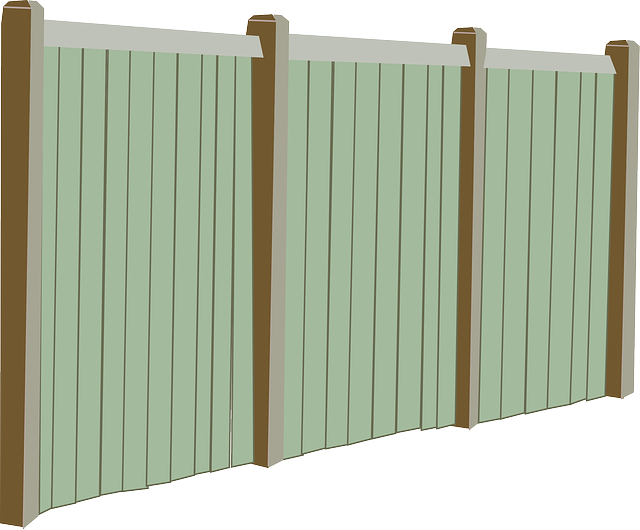Large properties present unique fencing challenges, requiring materials that are both durable and cost-efficient. This article explores a range of fencing solutions tailored to meet the specific needs of extensive land areas. From traditional options like wood and chain link to modern alternatives such as vinyl and innovative technologies, we delve into the costs, maintenance requirements, and aesthetic benefits of each, empowering readers to make informed choices for their expansive spaces.
- Understanding Fencing Needs for Large Properties
- Traditional Fencing Options: Costs and Maintenance
- Cost-Effective Alternatives: Vinyl Fencing
- Wooden Fences: Beauty Meets Budget-Friendliness
- Chain Link Fences: Security Without Breaking the Bank
- Innovative Solutions: Modern Fencing Technologies
Understanding Fencing Needs for Large Properties
Large properties present unique challenges when it comes to fencing, as the scale and diverse terrain require tailored solutions. Understanding the specific needs of such properties is essential for effective fence installation or maintenance. These may include controlling livestock, providing privacy, security, and aesthetics, all while considering budget constraints.
The size and layout of a large property can make traditional fencing methods costly and impractical. As such, cost-effective alternatives that offer durability and functionality are in demand. By assessing the land’s unique features, such as inclines, bodies of water, or dense vegetation, fence designers and installers can recommend suitable materials and styles that not only meet the client’s requirements but also align with their budget.
Traditional Fencing Options: Costs and Maintenance
Traditional fencing options, such as wooden or vinyl fences, are popular choices for property boundaries. However, they often come with significant costs and ongoing maintenance requirements. Wooden fences, while aesthetically pleasing, require regular painting or staining to protect against weather damage and rot, which can be an expensive and time-consuming process. Moreover, these materials can be susceptible to pests like termites, necessitating periodic treatment. Vinyl fences offer a more affordable upfront cost but are not as environmentally friendly due to their plastic composition and may require replacement parts over time. The installation process for both types typically involves hiring professionals, adding to the overall expense.
On the other hand, these traditional methods might not be suitable for large properties due to their higher material and labor costs. For expansive land, alternative solutions that offer durability and low maintenance are often more practical and cost-effective in the long run.
Cost-Effective Alternatives: Vinyl Fencing
For homeowners seeking affordable fencing options for their vast properties, vinyl fencing stands out as an excellent choice. This low-maintenance material offers a cost-effective alternative to traditional fences while providing durability and visual appeal. Vinyl is highly resistant to rot, rust, and peeling, ensuring it maintains its integrity over time.
Unlike wood, which requires regular painting and sealing, vinyl fencing is available in a wide array of colors and styles, allowing for easy customization to match any property aesthetics. Its flexibility enables it to bend around corners and contours, making it ideal for large, irregular-shaped plots. Moreover, installation is relatively straightforward, reducing labor costs. With its longevity and low maintenance requirements, vinyl fencing presents a smart investment for those seeking both functionality and affordability.
Wooden Fences: Beauty Meets Budget-Friendliness
Wooden fences have long been a popular choice for property owners, as they beautifully enhance outdoor spaces while remaining budget-friendly. The natural aesthetics of wood allow it to blend seamlessly with various landscapes, creating a welcoming and inviting atmosphere. Moreover, compared to other materials like metal or vinyl, wood offers significant cost advantages, making it an ideal option for large properties on a tight budget.
The versatility of wooden fences is another reason for their popularity. They can be customized in terms of style, height, and design to suit the unique needs and preferences of each property. Whether you’re looking for a traditional fence with classic picket designs or a more modern, sleek look, wood provides endless possibilities for creativity. Additionally, maintaining wooden fences is generally easier than other materials, requiring only regular cleaning and occasional staining or sealing to protect against weather damage.
Chain Link Fences: Security Without Breaking the Bank
Chain link fences are an affordable and reliable option for large property owners seeking to enhance their security. Despite their budget-friendly nature, they offer a robust solution, providing clear visibility and preventing unwanted intruders or animals from entering. This type of fencing is especially beneficial for expansive lands where traditional wood or vinyl options might be cost-prohibitive.
The versatility of chain link fences is another advantage. They can be easily customized with various colors and mesh sizes to suit different preferences and security needs. Moreover, their low-maintenance requirements make them a practical choice for property owners who want a secure fence without the hassle of frequent repairs or replacements.
Innovative Solutions: Modern Fencing Technologies
In today’s world, fencing no longer has to be a costly endeavor for large property owners. Innovative solutions and modern technologies have introduced cost-effective options that don’t compromise on quality or durability. From advanced composite materials to smart fencing systems, these innovations offer both functional and aesthetic advantages. For instance, high-density polyethylene (HDPE) and polyvinyl chloride (PVC) are now commonly used for fence construction due to their resilience, low maintenance requirements, and competitive pricing compared to traditional wood or metal options.
Additionally, electric fencing has evolved to become more accessible and efficient, providing a humane yet effective deterrent for unwanted intruders. Solar-powered fence lighting and smart sensors that detect movement and send alerts are further examples of how technology is enhancing fencing systems, making them not only cost-effective but also highly functional and eco-friendly.
